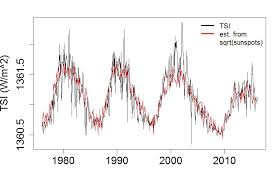Unit 2 - Astronomy New Worlds Celestial Objects and Stars
1/41
Earn XP
Description and Tags
Earth Science
Name | Mastery | Learn | Test | Matching | Spaced |
|---|
No study sessions yet.
42 Terms
Solar System
A system of planets, dwarf planets, asteroids, meteors, satellites (i.e. moons), and comets that are “captured” in orbit around a central Star or Stars
Smaller part of a galaxy
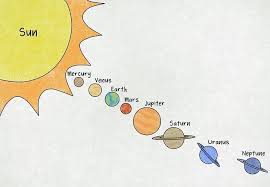
Age of Solar System
~4.568 (4.6) billion years old
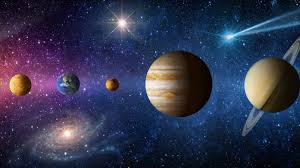
Nebular Hypothesis
Jeans Instability/Jean’s Mass and length
When a nebular cloud contains a certain amount of debris (mass) and has reached a certain size (diameter), the likelihood of cloud contraction is high
Gravitational collapse of a small part of a giant molecular cloud (sweeping/accretion)
Theory of how our solar system was formed
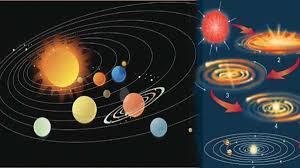
Stage 1 - Nebular Hypothesis
Nebular Cloud
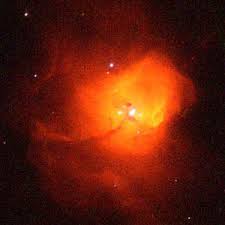
Stage 2 - Nebular Hypothesis
Nebular Disk
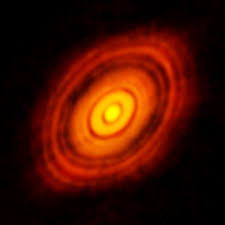
Stage 3 - Nebular Hypothesis
Planetesimals Form

Stage 4 - Nebular Hypothesis
Stable Solar System with Planets
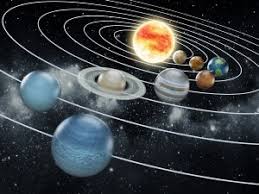
What is needed to make a planet?
Sweeping
Accretion
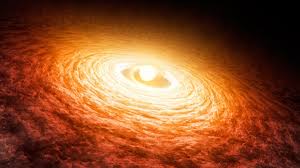
Sweeping
Gathering of surrounding debris by rotational forces
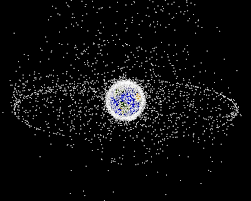
Accretion
Initially small particles of gas and dust stuck together via their electrostatic attraction
As they grew larger, their gravity became strong enough to attract particles as well, and their growth accelerated
Once large enough gravity pulls the planetesimal into a spherical shape
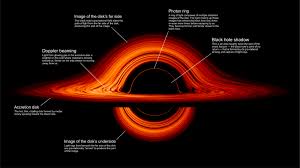
Chemical Differentiation
A process in which heavy elements sink towards the center of an object while the lighter elements remain closer to the surface
This is the reason that internal structures of planets are dense, rocky, and heavy
Solar wind blows out the remaining nebular gases which helped form the large gaseous atmospheres of the Jovian planets
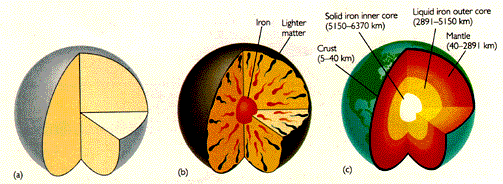
Terrestrial Planets
“Earth Like”
Inner 4 most planets
Bodies of mostly rock
Mercury, Venus, Earth and Mars
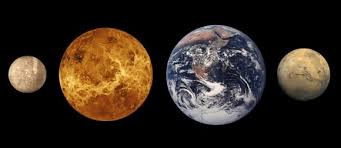
Mercury
Closest planet to sun
2nd hottest planet - - - - ~180 degrees C to 430 degrees C
No atmosphere/no greenhouse effect
Smallest
No satellites (moons)
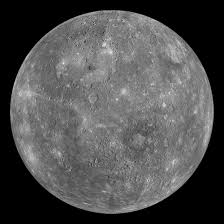
Venus
2nd from sun
Hottest planet!!!!!
Thick atmosphere of CO2/Large greenhouse effect
Temps: ~465 degrees C to -175 degrees C
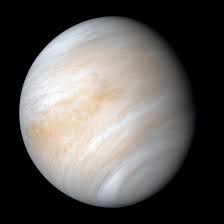
Earth
Only known to have life!!!
Only planet to have Vast amounts of water
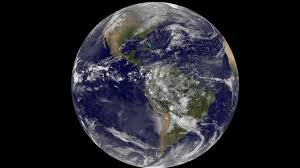
Mars
Red Planet - Has high amounts of Fe
Largest Volcano in S.S. Olympus Moons
Geologically active
Thin atmosphere of CO2
Similar temps and seasons to that of Earth
Frozen Water at its poles
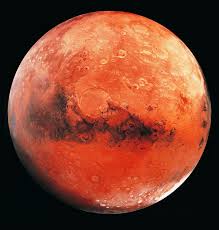
General Characteristics of All Terrestrial Planets
Small radii, low mass, high density
None to very thin atmospheres
Craters, canyons, and Volcanoes can be present
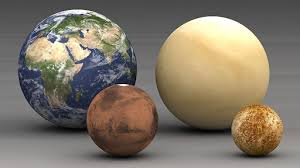
Terrestrial Planets Rotation
Mercury - .03°
Venus - 177.4°
Earth - 23.49°
Mars - 25.19°
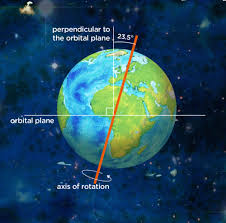
Asteroid Belt
Separates the Terrestrial planets from the Jovian planets
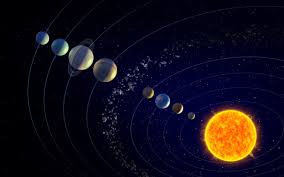
Jovian Planets
“Jupiter Like”
Outer 4 most planets
Gas Giants
Jupiter, Saturn, Uranus, Neptune
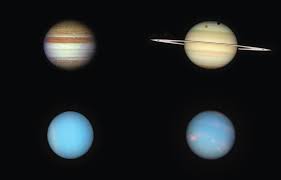
Jupiter
92% Gas (Hydrogen & Helium)
Great Red spot (~300yrs) Cyclonic Storm
Total Mass twice that of all other planets
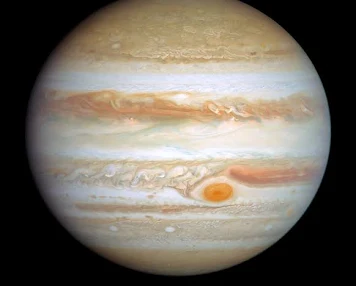
Saturn
Has rings ~150 km thick (Made from Rock and Dirty Ice)
930 mi/hr winds
Less dense than Water (.7)
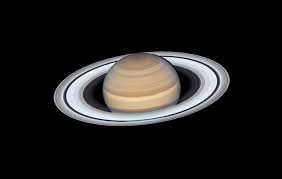
Uranus
Mostly Methane Gas gives it a Blue-green color
Very strange Rotation. It rotates tipped 98 degrees on its side

Neptune
Great blue spot
~1,100 mi/hr winds (strongest in Solar System) Faster than the speed of sound!
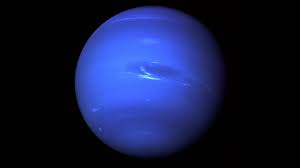
General Characteristics of all Jovian Planets
Large radius, high mass, and very low density
Thick Atmosphere Composed of primarily gases. H2, He and some CH4
Solid Cores of the planets are believed to exist deep under the gases
All have ring systems
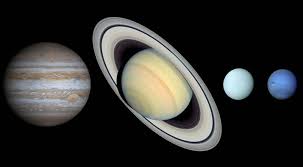
Jovian Planetary Rotation
Jupiter - 3.13°
Saturn - 26.73°
Uranus - 97.77°
Neptune - 28.32°
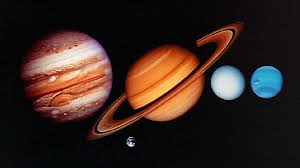
Planet Classification
Planet - is in orbit around the Sun
Has sufficient for it’s self-gravity to overcome rigid body forces so that it assumes a nearly round shape
Massive enough to clear the neighborhood around its orbit. Does not share it’s orbit!
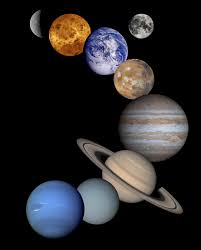
Dwarf Planet
Is in orbit around the Sun
Has sufficient mass for its self-gravity to overcome rigid body forces so that it assumes a nearly round shape
Has not cleared the neighborhood around its orbit. It shares an orbit
Is not a satellite of another planet
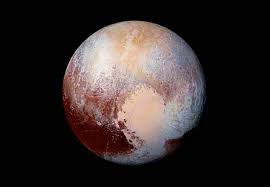
Smaller Solar System Bodies
This category collectively refers to all other celestial bodies orbiting our Sun, (including asteroids, comets, and satellites)
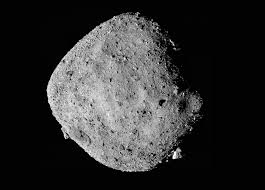
What 2 regions is the residual debris of our solar system locked in?
Trans neptunian object/orbit
The Kuiper Belt
The Oort Cloud
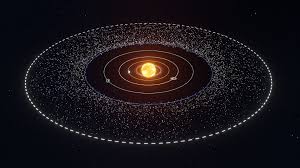
The Kuiper Belt
An area composed largely of frozen volatiles (termed “ices”), such as Methane,ammonia and water bodies beyond the orbit of Neptune.
30 to 50 AU from the sun
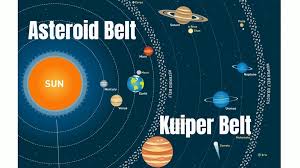
The Oort Cloud
A theoretical cloud containing “dirty ice” well beyond the orbit of the Kuiper Belt
A sphere thought to be between 2,000 and 200,000 A.U. away from the sun
80% of all known comets have originated here
Possible Oort Cloud Bodies:
2000 CR105
2006 SQ372
2008KV42

A Star
A massive, luminous sphere of gas/plamas held together by gravity
Composed primarily of hydrogen along with helium and trace amounts of heavier elements caused by nucleosynthesis
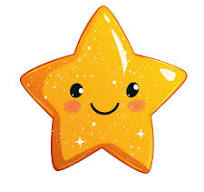
Solar Structure
The sun is completely gaseous
Mainly Hydrogen (74%) and He (24%)
The Sun is not burning (5,500 degree C - 15,000,000 degrees C)
Energy comes from Nuclear fusion
5 billion years old (lifespan = ~10 Bil.)
Solar energy is nearly pollution free
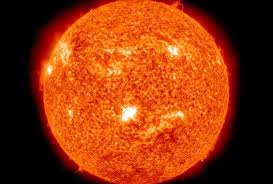
Sun’s Rotation
The Sun Rotates every 25.6 to 36 days depending on Solar Latitude and it’s axial tilt on is ~7.25 from the axis of the Earth’s orbit
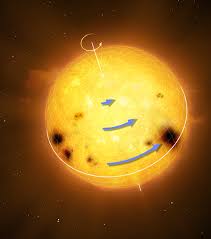
Why isn’t the sun burning?
There is nothing to burn because of fusion
Looks yellow/orange because of wavelength and frequency emitted from Sun
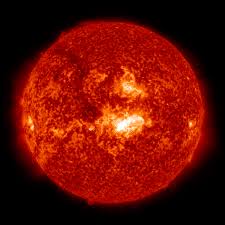
What 2 forces keep the sun in equilibrium?
Gravity caused by large mass (inward)
Kinetic Pressure - gasses pressing (outward)
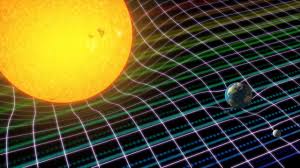
3 features of the sun
Solar Prominences
Solar flares
Sunspots
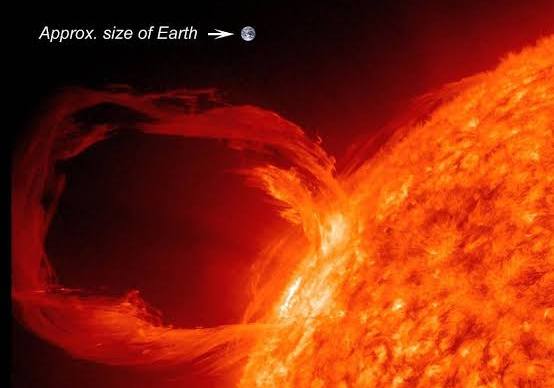
Solar Prominences
Arcs of gases can shoot tens of thousands of miles from the Sun’s surface PROMINENCES bounce & walk along the Surface
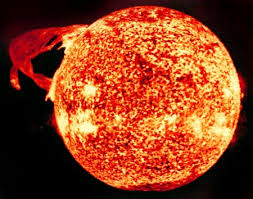
Solar Flares
Violent eruptions that shoot into space
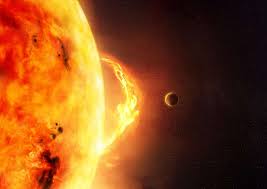
Sunspots
Cooler, darker regions on the Sun’s surface
Cause changes in the Earth’s weather patterns and can interfere with Electrons, devices, solar cycles
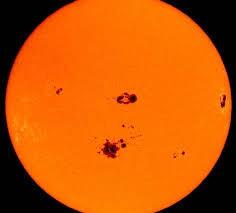
What kind are relationships are sunspots?
Cylic
(~11 year cycle)
